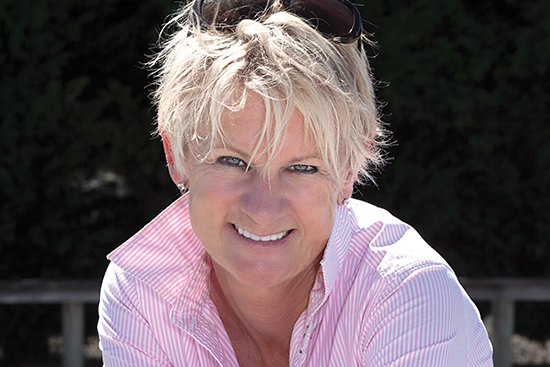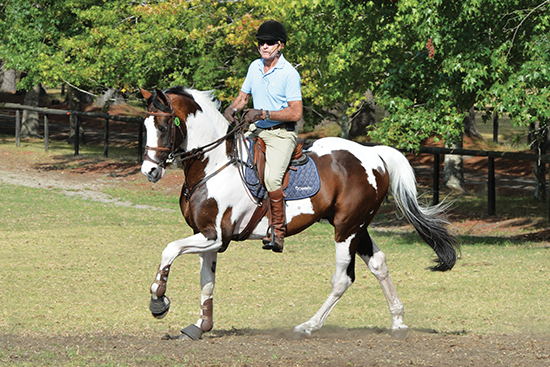 Top Australian jumping coach, Michelle Strapp, was one of the enthusiastic band of Australian coaches at the instructor’s session at Diamond B during George Morris’ last visit to Australia…
Top Australian jumping coach, Michelle Strapp, was one of the enthusiastic band of Australian coaches at the instructor’s session at Diamond B during George Morris’ last visit to Australia…
So what makes George Morris an excellent coach? What personal qualities does he possess that separates and elevates him from being just a good coach? Is it more his delivery of training, or his inner qualities? Is it more his coaching technique, or his artistry? Is it more his coaching knowledge, or its application? Is it more his natural talent for helping people to develop and enhance their skills? Is it his insightfulness to analyse people? In my opinion there is no one single attribute that makes him an excellent coach as I believe that George demonstrates all these qualities, and that’s what makes him a master coach.
George has a wonderful self-awareness; he speaks of his own weaknesses, and uses them to help others. He is highly perceptive, which gives him the ability to deal with people, and enhance their skills. He has the ability to focus on the important details that form the building blocks for reaching higher levels. He is a student of the equestrian industry, always curious and inquiring; he has the capacity for deep and wide learning. He views coaching as a passion, an art and a discipline. He sets a great example to all trainers. From his years of experience and hunger to learn, he has developed his coaching system, which he believes in strongly. Which as many great trainers will agree, is the art of classical riding. He is always insisting coaches give serious consideration to that vital aspect of classical training, reading and learning from the masters.
Some coaches are convinced that their own particular methods and principles need no expanding on. They regard their own riding success as proof of this and will not even consider other methods. A real horseman like George Morris is always searching to expand his knowledge. He knows that it’s good to learn about other equestrian disciplines so that you can develop a better understanding of your own. He is an outstanding student of the sport.
George, still a master in the saddle, here on stallion Copabella Visage
George’s knowledge is based on equestrian traditions and history, as well as his extensive practical experience. He demonstrates mastery of training techniques as well as the use of its tools. He draws on the many equestrian books he has read, and conveys his great excitement at accumulating the benefits he has received from learning from other masters. I often wonder why riders spend very little time reading about techniques of our sport, as compared to other sports. He discussed the French and the German schools of training, he discussed the differences in the details and aspects of position and seat – opening the coaches’ minds, expanding their knowledge, encouraging them to become students themselves and widen their understanding of classical training.
His classical training is based on the love for the horse; it is not based on expanding the rider’s ego. His teaching is about the rider dedicating himself to the horse’s best interests, a training system that ultimately develops the horse to its full potential.
George’s classical techniques have demonstrated over time the capacity to produce the greatest good for the greatest number of riders and horses.
Riding to whatever level is still just a skill, and these skills and techniques with classical consistent training can be taught, but the desire to learn these skills cannot. George’s awareness of this is always demonstrated through his demand for discipline from his students and his audience. George has little patience with students who don’t pay attention. George requires his students to focus, change habits, work on the individual pieces to connect to the larger picture, not just to win the ribbon on the day.
George’s basic principles of correct riding have been around for decades and are nothing new. So why are people surprised when he suggests they ride inside leg to outside rein or not hang onto the inside rein? What was the novelty with varying two-point and three-point positions in the clinic? What was surprising about him directing the rider to ride the horse from the back to the front? Or not to pull the horse’s head down? To put your stirrup on the ball of your foot? Why are these not a part of everyday training?
These are just examples of basic knowledge that any quality coach should expect of any pupil riding a horse. Do people think George is re-inventing the wheel by asking riders establish these basic exercises that are the foundation of good riding. Or is it just his STRONG STANDARDS that get the message across, the message itself is basic, not always easy, but the basis of training.
I would hope that the coaches at George’s clinic, myself included, studied his mastery in communication, and his ability to break down the details, giving us the building blocks of teaching. His humbleness that allows him to increase his knowledge and experience from each horse he rides, each pupil he teaches and each book he reads. His perfectionist approach to detail. He hates sloppy standards and is driven to create more discipline in equestrian sport. He wants to lift the level of coaching in our country. How are we going to create better horse riders/and horsemen if we skip all of the important and basic foundations of educating horse and rider?
I believe his coaching clinic was fantastic, and I am very pleased I attended. I think his high standards and expectations of disciplined training, and life in general, plus his excitement in passing on his knowledge and wisdom, should be grasped by every coach, and every rider.
This article first appeared in the April 2014 issue of THM.

